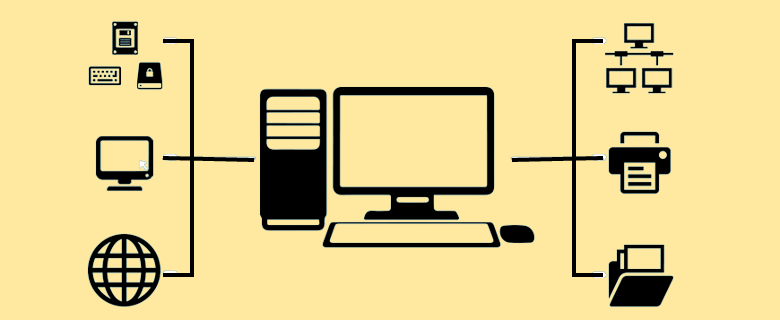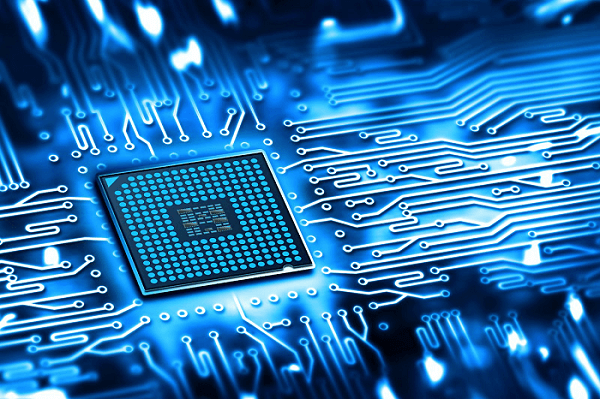Digital DefinitionDigital is defined as the technique of using a high-quality electronic system that records sound or stores information utilizing the numerals 1 and 0. MeaningDigital electronics are those that generate, store, and process information using the positive and negative states of matter. The positive is expressed or represented by the number 1, and the negative by the number 0. Information transmitted or preserved via digital means is therefore represented as a string of 0s and 1s. These state numbers are each referred to as bits, and a byte is a collection of bits that a computer may address individually. Analogue technology, which adds electronic signals of changeable frequency or amplitude to carrier waves of a specific frequency, was the only option for electronic transmission prior to the development of digital technology. Transmission over phones and broadcast media has traditionally employed analogue technology. 
HistoryIn addition to proving that the binary number system could be used to combine logical and arithmetic principles, Gottfried Wilhelm Leibniz enhanced the binary numbers system, which was published in 1705. Midway through the 19th century, George Boole created the contemporary version of digital logic. In a letter dated 1886, Charles Sanders Peirce outlined how logical operations may be carried out via electrical switching circuits. Vacuum tubes finally took the place of relays in logic processes. The Fleming valve modification by Lee De Forest in 1907 could be utilized as an AND gate. As proposition 5.101 of his Tractatus Logico-Philosophicus (1921), Ludwig Wittgenstein developed a variant of the 16-row truth table. Walther Bothe, who invented the coincidence circuit, was awarded the Nobel Prize in 1954 in physics for creating the first modern electronics AND gate in 1924. In the first century, mechanical analogue computers initially appeared, and they were later employed for astronomical calculations during the Middle Ages. During World War II, mechanical analogue computer systems were used for specialized military tasks like torpedo aiming. The first electronic digital computer systems were developed during this time; George Stibitz first used the word "digital" in 1942. They formerly occupied a large room and consumed as much energy as several hundred modern PCs. Z3 is an electromechanical computer designed by Konrad Zuse. When it was finished in 1941, it was the world's first functioning, completely autonomous, programmable digital computer. The vacuum tube was made possible by John Ambrose Fleming's creation in 1904. Purely electronic components of circuits swiftly replaced their mechanical and electromechanical equivalents, and digital calculation quickly replaced analogue. John Bardeen & Walter Brattain developed the point-contact transistor at Bell Labs in 1947, while William Shockley developed the bipolar junction transistors there in 1948. 
PropertiesOne advantage of digital circuits over analogue circuits is the ability to transmit signals that have been digitally encoded without noise-induced signal degradation. For instance, if the quantity of transmission noise collected does not prevent the detection of the 1s and 0s, a continuous audio signal that is supplied as a series of ones and zeros can be accurately reconstructed.

Digital Circuit MeaningA sort of circuit that uses various logic gates is a digital circuit. Differentiating between distinct power signals is done using logic gates. Through various gates, the power signal can be sent to the various components of the electronic equipment. This will make it easier to produce an output signal whose energy level is directly proportionate to the input signals. Analogue components are used in the majority of these circuits. Compared to analogue circuits, they feature a more intricate design. Basics of Digital CircuitsThere are various components that make up a digital circuit, and each one has a specific function. In this system, there are active and passive components. Diodes and transistors are active components, whereas registers, inductors, capacitors, and other passive components are active. A power source that can provide the circuit with DC power is also necessary in addition to that. The circuit can also incorporate other measurement and analysis tools. Here are some of the fundamental parts of an electronic circuit:
We are unable to change the resistance value of a fixed resistor. A variable resistor allows us to adjust the resistance value to meet our needs.
The logic gates are the most fundamental parts of a digital circuit. They generate one output while requiring two or more inputs. There are mainly three types of logic gates:
Another element of an electric system that can control how much current is passed across a circuit is a switch.
Next TopicEquity Shares Definition
|
 For Videos Join Our Youtube Channel: Join Now
For Videos Join Our Youtube Channel: Join Now
Feedback
- Send your Feedback to [email protected]
Help Others, Please Share










